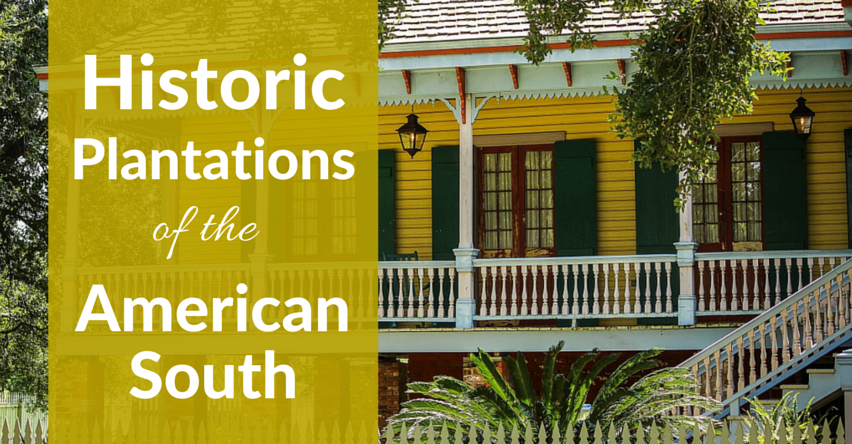Most people are familiar with Oak Alley Plantation which has been featured in several films including Interview with a Vampire and Django Unchained. The following antebellum estates are replete with grandeur, mystique, history, and tragedy. Visit the sites where history lives on your next group trip to the American South.
Shirley Plantation - Virginia
The country’s first plantation, Shirley was built in 1613, only six years after English settlers founded Jamestown. The present mansion’s construction was completed in 1738, finished by the great-granddaughter of the farm’s original owner, Edward Hill I. Shirley remains a working plantation and privately-owned home to this day. The Hill family has lived on the property continuously for 11 generations, keeping the estate in beautiful, restored condition.
The “Great House” was styled originally in Anglo-Dutch architecture through continuous restoration efforts and additions have mixed styles, creating a charismatic aesthetic. Learn about the amazing women who kept the farm operating during the Civil War, who saved it from destruction by caring for injured Union soldiers. Tours highlight the history of the plantation with programs including the role of religion in colonial America, colonial education, the history of the Hill family, and the effects of the Civil War and Civil Rights upon the plantation. A new slavery exhibit has been built in the Kitchen building, an original 18th-century outbuilding.
Sherwood Forest - Virginia
Sherwood Forest is unique as the only private home to be owned by two unrelated presidents. William Henry Harrison purchased the home under the name “Walnut Grove” and following the 9th president’s death, his successor John Tyler bought the plantation in 1842 and renamed it Sherwood Forest to reflect his outlaw position as part of the Whig party. Tyler lived in the house from the time he left the White House until his death in 1862. The Tyler family has continuously lived here since that time, keeping the house in perfect condition.
The grounds are open for tours daily from 9 am-5 pm. Only 30 minutes from Williamsburg, Sherwood Forest is a Greek Revivalist wonder with 25 acres of gardens, woodlands, and outbuildings both original and reconstructed. Visit the gardens once used by Civil War troops and even learn about the ghost, the “Gray Lady,” who has allegedly haunted the Gray Room for the past 200 years, rocking back and forth in her rocking chair.
Destrehan Plantation - Louisiana
Destrehan, a glorious Creole colonial construction, was built in 1787 and is the oldest plantation on the national register to exist in the Mississippi River Valley. What sets this estate apart is its historic documentation and family history. Visit the Jefferson Room where you can see a display of the original “Jefferson Document,” a record signed by the president which promoted the plantation’s owner to join the Orleans Territorial Council. He and four others were empowered to help the cultural transition of locals after the Louisiana Purchase.
The 1811 Slave Revolt Museum is open for visitors as well, highlighting the slave revolt that began on this property. Also learn about the system of slave management in Creole country, what life was like on a sugar plantation and more. Visit the outbuildings like the original Mule Barn and the vintage garden, designed to resemble the practical yet beautiful gardens of the 18th century. Tours run from 9-4 pm daily and leave every half hour.
Whitney Plantation - Louisiana
This historic complex, including 12 structures, was originally known as the Habitation Haydel. The Spanish Creole-style main house and its surrounding structures were built by slaves under the direction of owner, German immigrant Ambrose Heidel, in 1752. Today, the plantation stands as a memorial to the slaves who lived, worked, and sacrificed on the property and on others like it.
The Field of Angels, a section of the slave memorial site, is dedicated to 2,200 Louisiana slave children who died before their third birthday. 39 children died at Whitney between 1823-1863, only six of them made it to five years. Also dedicated to the slaves of Whitney is the Slave Quarters site. The buildings that stand are not the originals as the previous owners advocated for their removal in an attempt to raise property values, though the ones on the property were moved from other plantations to support the authenticity and educational value of the site. Tours are given every day except Tuesdays from 9:30-4:30 pm.
San Francisco - Louisiana
The facade of the San Francisco estate is striking in the extreme, styled in bright turquoise and cream, in the unique “Steamboat Gothic” style for its elegance resembling steamboats of the era. The current home was finished in 1856, built by sugar cane farmers of French descent. The French design and interior are highly evident with painted ceilings, decorated friezes, and Creole furnishings that are original to the home.
Tours leave every 20 minutes daily between 9:30-4:30 and visit the slave cabins, one-room schoolhouse, the Plantation Store, and various restored rooms of the ornate plantation home. Named the 2015 Travel Attraction of the Year, San Francisco Plantation is as beautiful as historic plantations get.
Laura Plantation - Louisiana
A French naval veteran bought the land in 1804, building his grand home in the middle of a centuries-old Colapissa Indian village that stood on the unusually high and flat ground. Completed in 1805, Laura resembles no other plantation with her bright exterior, painted in reds, yellows, and green. Though an electrical fire destroyed nearly 80% of the house in 2004, it has been restored to resemble its original character.
Tours are based on over 5,000 pages of documents found in the National Archives in Paris. You are led from the basement area through galleries, chambers and offices, service and common rooms featuring family heirlooms and Creole furnishings. Programs highlight the tragedies which befell the family, Creole traditions and the lives and works of the highly skilled slaves who built this gorgeous property. Tours end in the slave cabins where workers lived until 1977.

